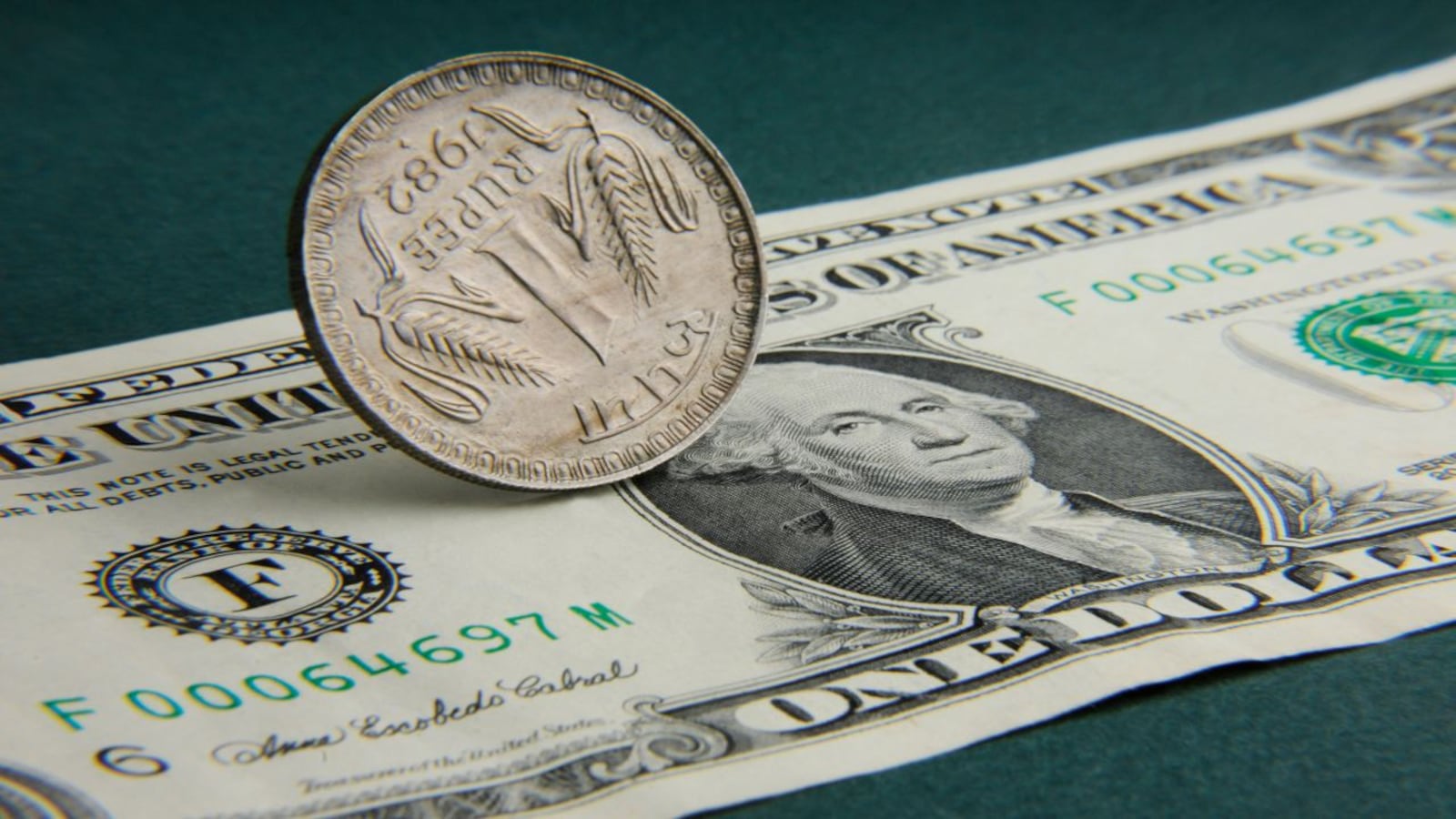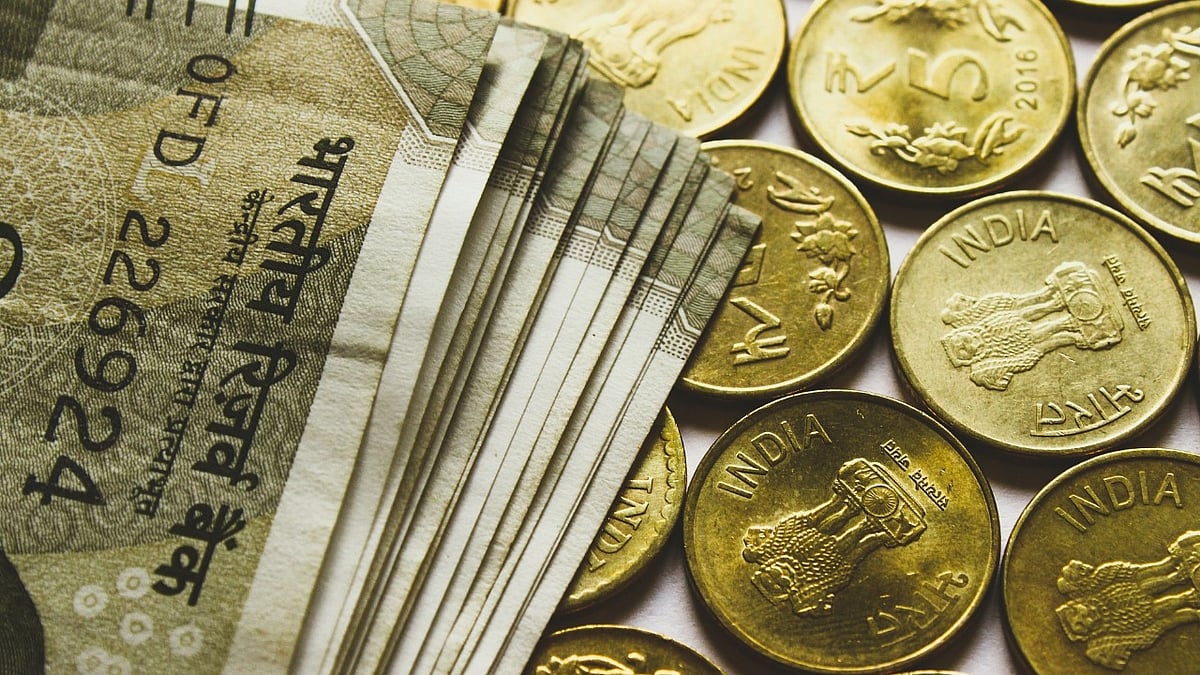Rupee opens 5 paise higher at 83.20 against the US dollar

Rupee opens 5 paise higher at 83.20 against the US dollar
The Indian rupee began Wednesday’s trading session on a positive note, gaining 5 paise against the US dollar. This initial strength can be attributed to several factors, including the influence of a buoyant equity market and the relative weakness of the US dollar against major global currencies.
At the opening bell, the rupee was quoted at 83.20 against the US dollar, exhibiting a modest improvement from its previous closing rate of 83.25. This initial uptick in the rupee’s value reflects the prevailing market sentiment and investor confidence.
One significant factor contributing to the rupee’s strength is the positive performance of India’s equity markets. A robust stock market often leads to increased foreign investment inflows, which, in turn, can boost the demand for the rupee. Investors are drawn to the Indian equity market due to its potential for growth and profitability.
Additionally, the relative weakness of the US dollar in international forex markets has also played a role in supporting the rupee’s appreciation. The US dollar’s performance against other major currencies can influence its attractiveness to traders and investors. A weaker US dollar can make the rupee more appealing as an alternative investment.
Overall, the rupee’s early gains indicate optimism in the financial markets, driven by positive economic indicators and favorable global factors. However, currency markets are subject to fluctuations, and the rupee’s value may evolve throughout the trading session in response to changing conditions and market dynamics. Traders and investors will closely monitor these developments to make informed decisions regarding their currency positions.
The dollar index, a measure of the US dollar’s performance against a basket of six major currencies, was trading with a slight 0.05% decline at 105.77. This index provides insights into the dollar’s overall strength in the global currency markets by comparing it to a diversified group of key currencies.
The relatively small decrease in the dollar index suggests that the US dollar is experiencing a minor decline compared to these major currencies, which can have various implications for international trade and financial markets.
Currency markets are highly dynamic and can be influenced by a wide range of factors, including economic data releases, geopolitical events, central bank policies, and global economic conditions. Traders and investors often closely monitor the dollar index, as it serves as a valuable indicator of the US dollar’s performance and can impact trading decisions and currency exchange rates.
The dollar’s value in international markets can affect various aspects of the global economy, including the competitiveness of US exports, the cost of imports, and the attractiveness of dollar-denominated assets for investors. Therefore, fluctuations in the dollar index are closely watched by financial professionals and participants in the global currency markets.
It’s important to note that currency markets are subject to constant changes and can experience rapid movements, so market participants must stay informed about the latest developments and trends to make informed trading decisions. The dollar index, along with other economic indicators and factors, provides valuable insights into the complex world of international currencies.
The Indian rupee opened on Wednesday with a modest gain of 5 paise against the US dollar, as it began trading at 83.20 per dollar compared to its previous closing rate of 83.25. This opening reflects the currency’s response to positive developments in equity markets and a relatively weaker performance of the US dollar against major currencies worldwide.
The dollar index, which measures the strength of the US dollar against a basket of six major currencies, registered a minor 0.05% decline, standing at 105.77. This index offers a broader perspective on the dollar’s performance in global currency markets, taking into account its performance against key rivals like the euro, yen, and pound.
Currency markets are highly dynamic and subject to various influences, including economic data releases, geopolitical events, central bank policies, and broader economic conditions. The rupee’s performance against the US dollar can have significant implications for international trade, financial markets, and investment decisions.
Traders and investors are closely monitoring not only the currency markets but also global factors that may affect exchange rates. One such factor is the upcoming release of the US Federal Open Market Committee (FOMC) meeting minutes, which could provide insights into the potential for future interest rate hikes. Any indication of increased interest rates by the FOMC could lead to a stronger US dollar, which may influence currency movements.
Given the dynamic nature of currency markets, traders and investors are advised to stay informed about the latest developments and trends that could impact exchange rates. The rupee’s performance against the US dollar is just one aspect of the broader global currency landscape, and it reflects the complex interplay of economic, geopolitical, and market forces.
In the currency market, the Indian rupee made a modest gain of 5 paise against the US dollar, opening at 83.20 per dollar compared to its previous closing rate of 83.25. This slight appreciation of the rupee was influenced by positive sentiment in the equity markets and a relatively weaker performance of the US dollar against major global currencies.
Meanwhile, in the global oil market, Brent crude futures, which serve as the international benchmark for oil prices, recorded a 0.38% increase, reaching $87.98 per barrel. This uptick in oil prices followed previous sessions’ gains, driven by concerns over potential supply disruptions due to the ongoing conflict between Israel and Hamas.
On the domestic front, Indian equity markets displayed positive momentum, with the BSE Sensex surging by 455.36 points or 0.69% to reach 66,534.72 points. Similarly, the NSE Nifty advanced by 137.80 points or 0.7% to touch 19,827.65 points. These gains in the equity markets could have contributed to the positive sentiment surrounding the rupee.
It’s noteworthy that foreign institutional investors (FIIs) were net sellers of Indian shares on Tuesday, with net sales totaling ₹1,005.49 crore. In contrast, domestic institutional investors (DIIs) were net purchasers of shares, with net purchases amounting to ₹1,963.34 crore. These figures provide insights into the participation of institutional investors in the Indian stock market.
Currency and equity markets are interconnected, and various factors can influence their movements, including economic data, geopolitical events, investor sentiment, and global economic conditions. Traders and investors closely monitor these markets to make informed decisions regarding currency trading, stock investments, and portfolio management.




